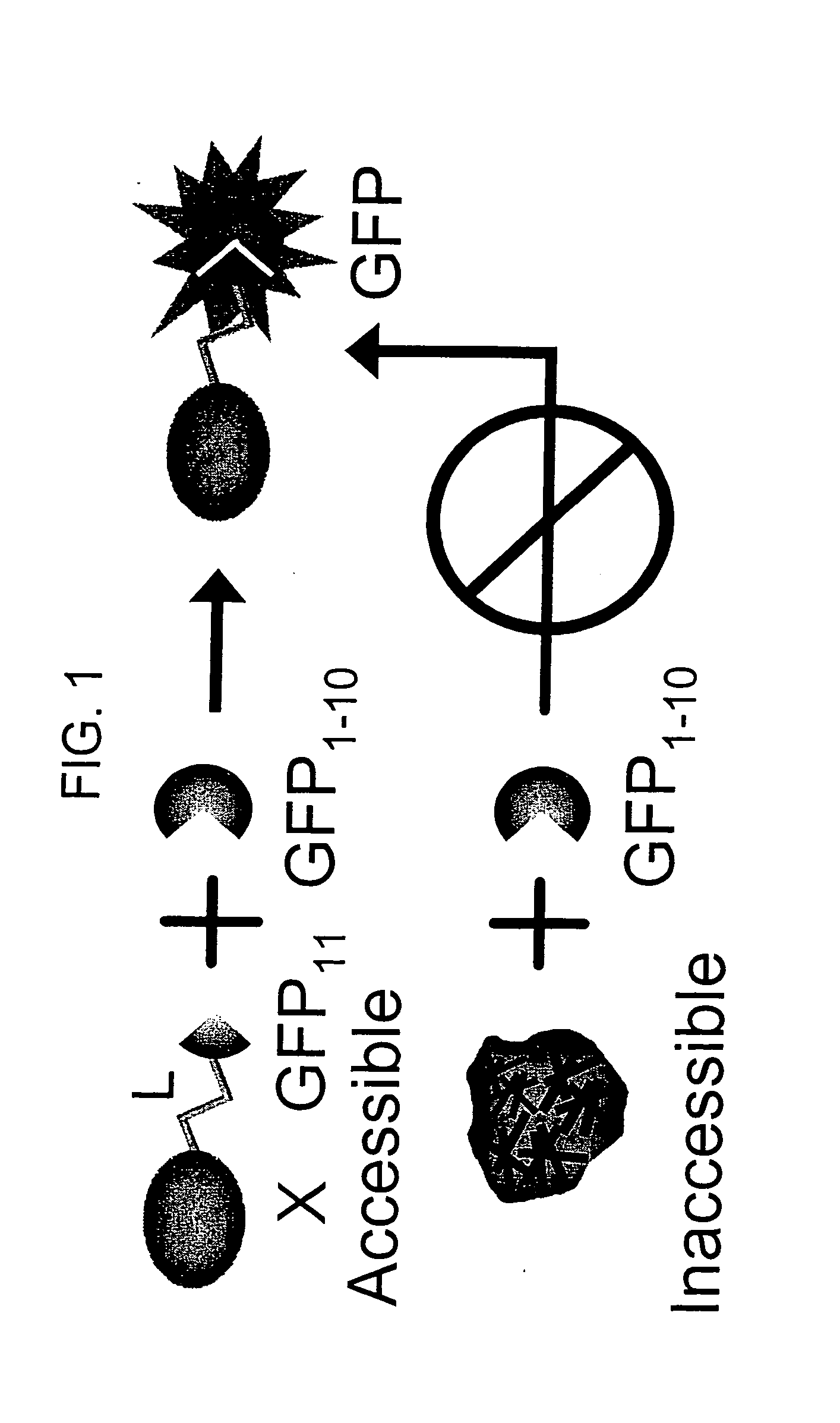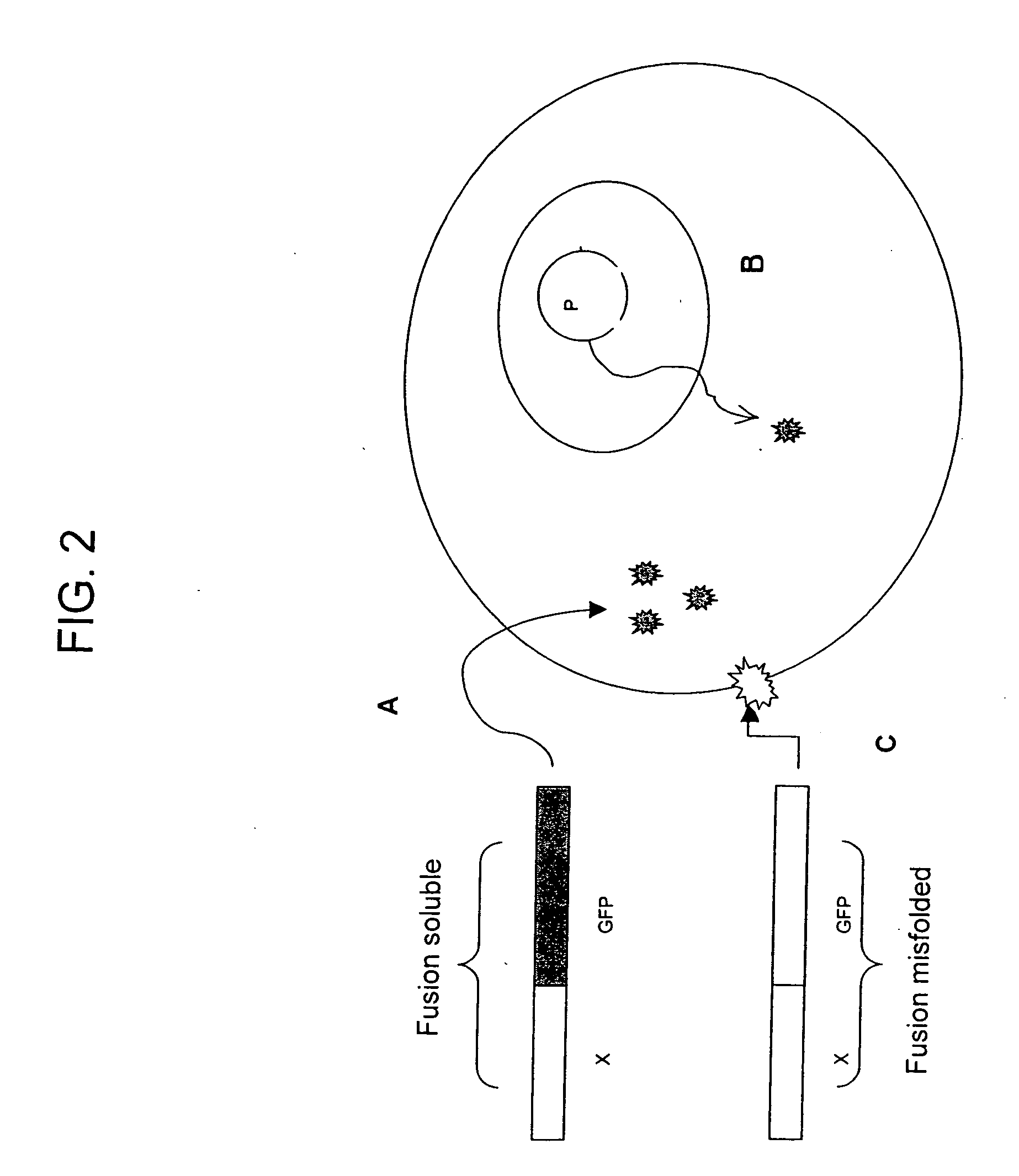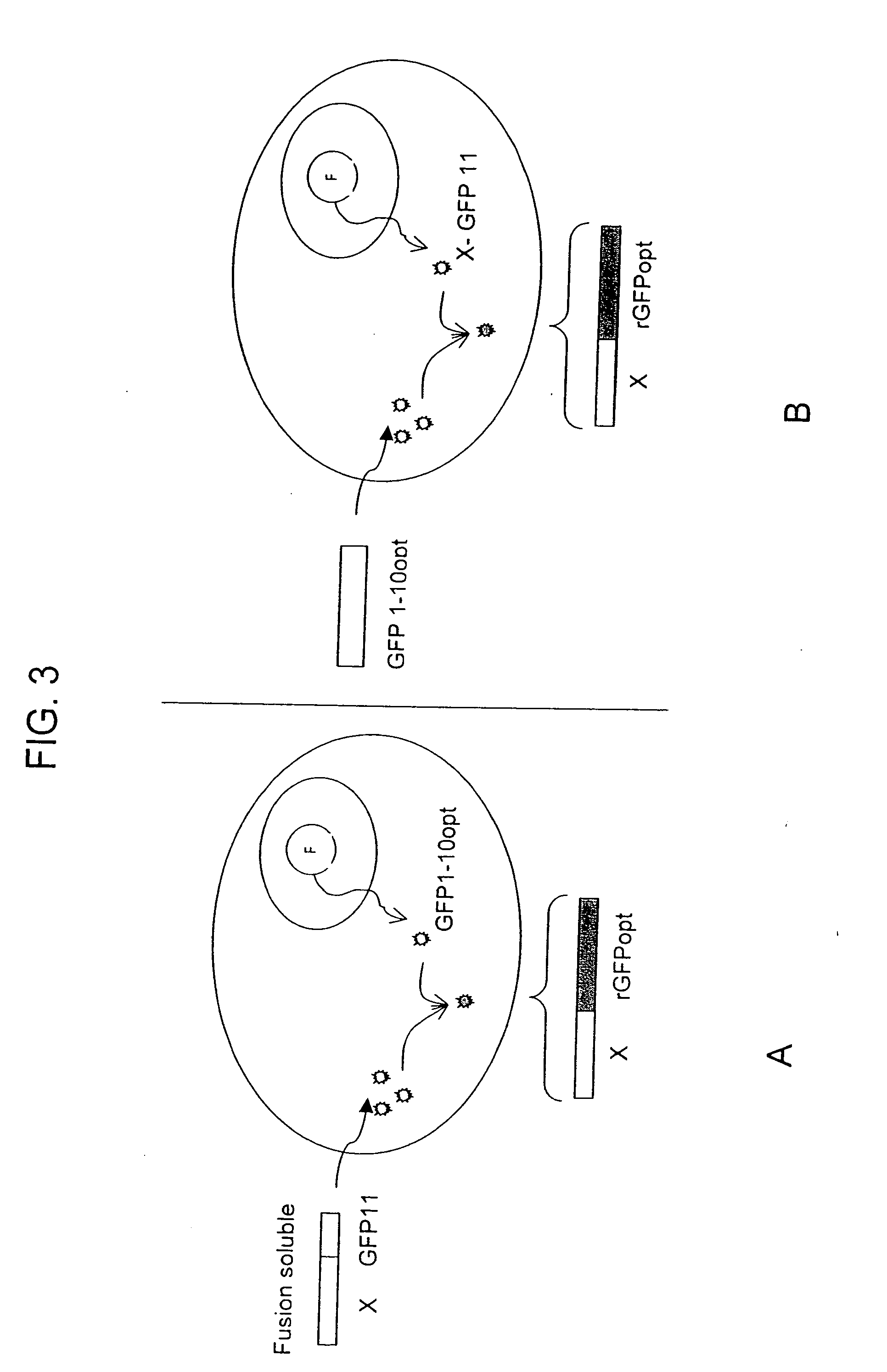Protein subcellular localization assays using split fluorescent proteins
a technology of fluorescent proteins and subcellular localization, which is applied in the field of protein subcellular localization assays using split fluorescent proteins, can solve the problems of misfolding of the fused protein, interference with protein processing and/or intracellular transport, and limited information provided by methods
- Summary
- Abstract
- Description
- Claims
- Application Information
AI Technical Summary
Benefits of technology
Problems solved by technology
Method used
Image
Examples
example 2
Complementation of Split GFP in Specialized Compartments
Cloning of Localization Sequences in Fusion with SR-s11 and GFP1-10
[0113] If both fragments contains a sequence that targets the gene of interest in a specialized compartment, then the two tagged split-GFP fragments will be targeted to this particular location and will be able to complement in the compartment.
[0114] Various subcellular localization signal sequences or tags are known and / or commercially available. These tags are used to direct split-fluorescent protein fragments to particular cellular components or outside of the cell. Mammalian localization sequences capable of targeting proteins to the nucleus, cytoplasm, plasma membrane, endoplasmic reticulum, golgi apparatus, actin and tubulin filaments, endosomes, peroxisomes and mitochondria are known.
[0115] Detailed protocols for localization in the nucleus, mitochondria and endoplasmic reticulum follow.
[0116] Localization in mitochondria: The mitochondrial targetin...
PUM
| Property | Measurement | Unit |
|---|---|---|
| Volume | aaaaa | aaaaa |
| Volume | aaaaa | aaaaa |
| Volume | aaaaa | aaaaa |
Abstract
Description
Claims
Application Information
 Login to View More
Login to View More - R&D
- Intellectual Property
- Life Sciences
- Materials
- Tech Scout
- Unparalleled Data Quality
- Higher Quality Content
- 60% Fewer Hallucinations
Browse by: Latest US Patents, China's latest patents, Technical Efficacy Thesaurus, Application Domain, Technology Topic, Popular Technical Reports.
© 2025 PatSnap. All rights reserved.Legal|Privacy policy|Modern Slavery Act Transparency Statement|Sitemap|About US| Contact US: help@patsnap.com



